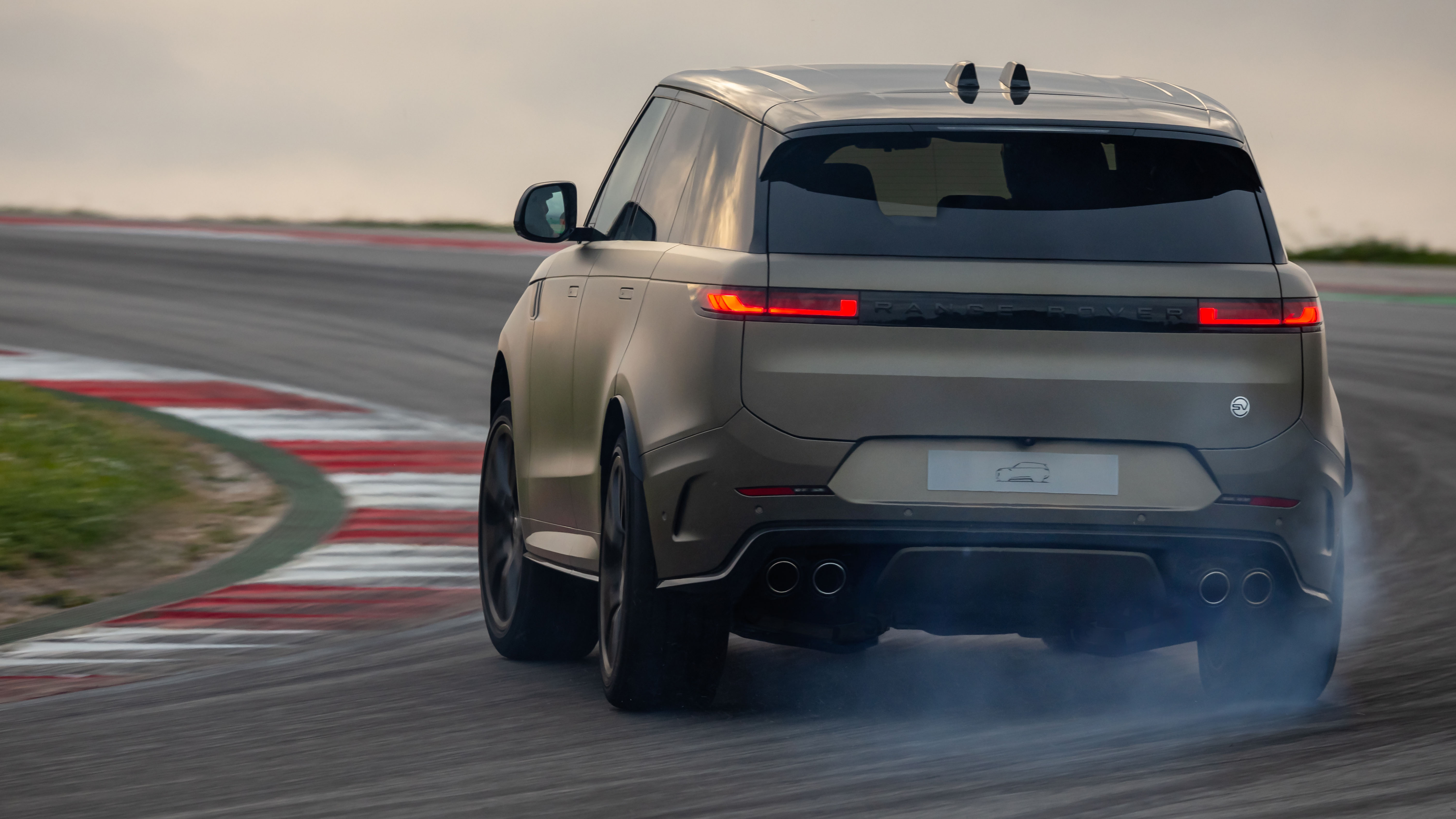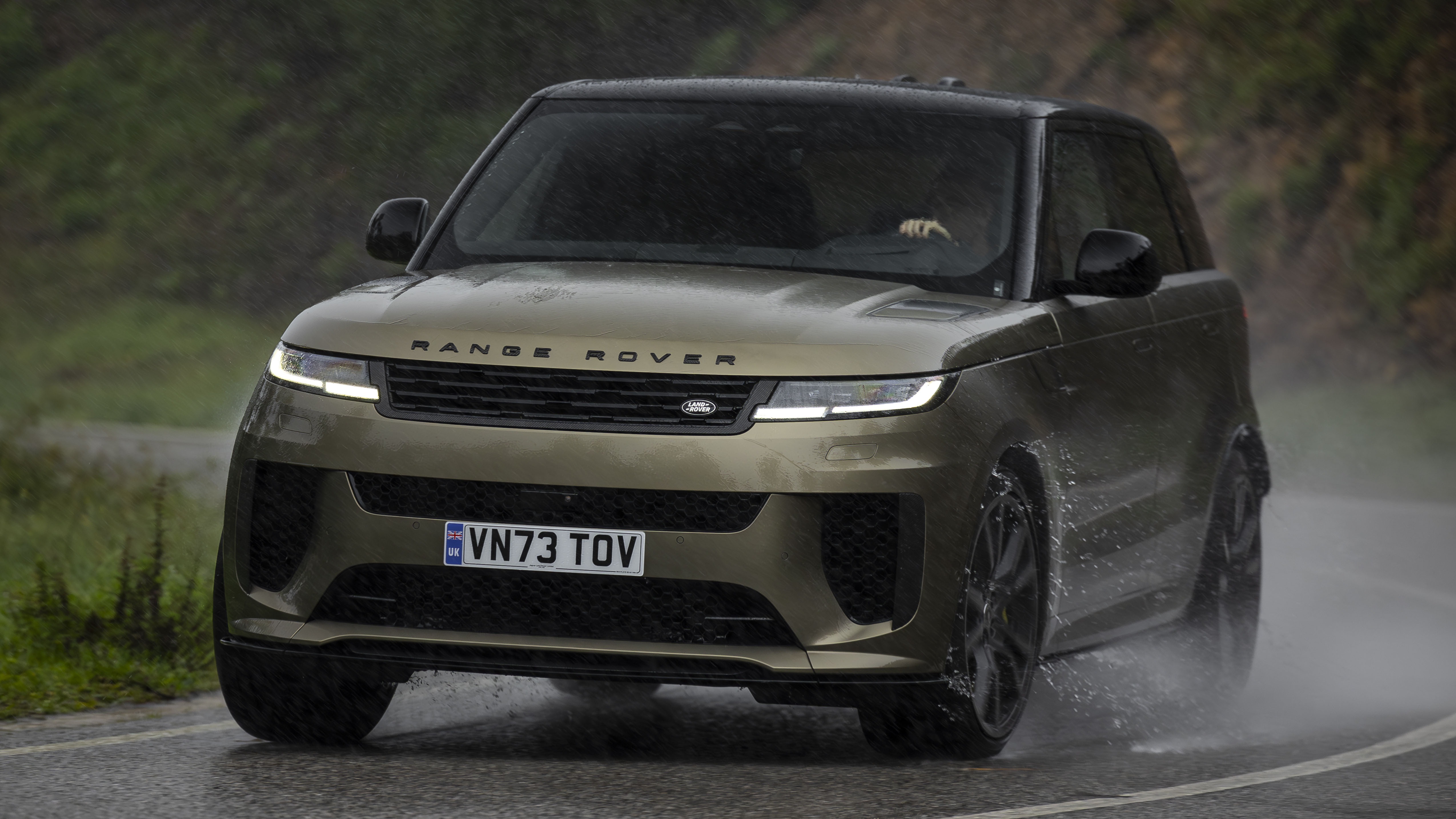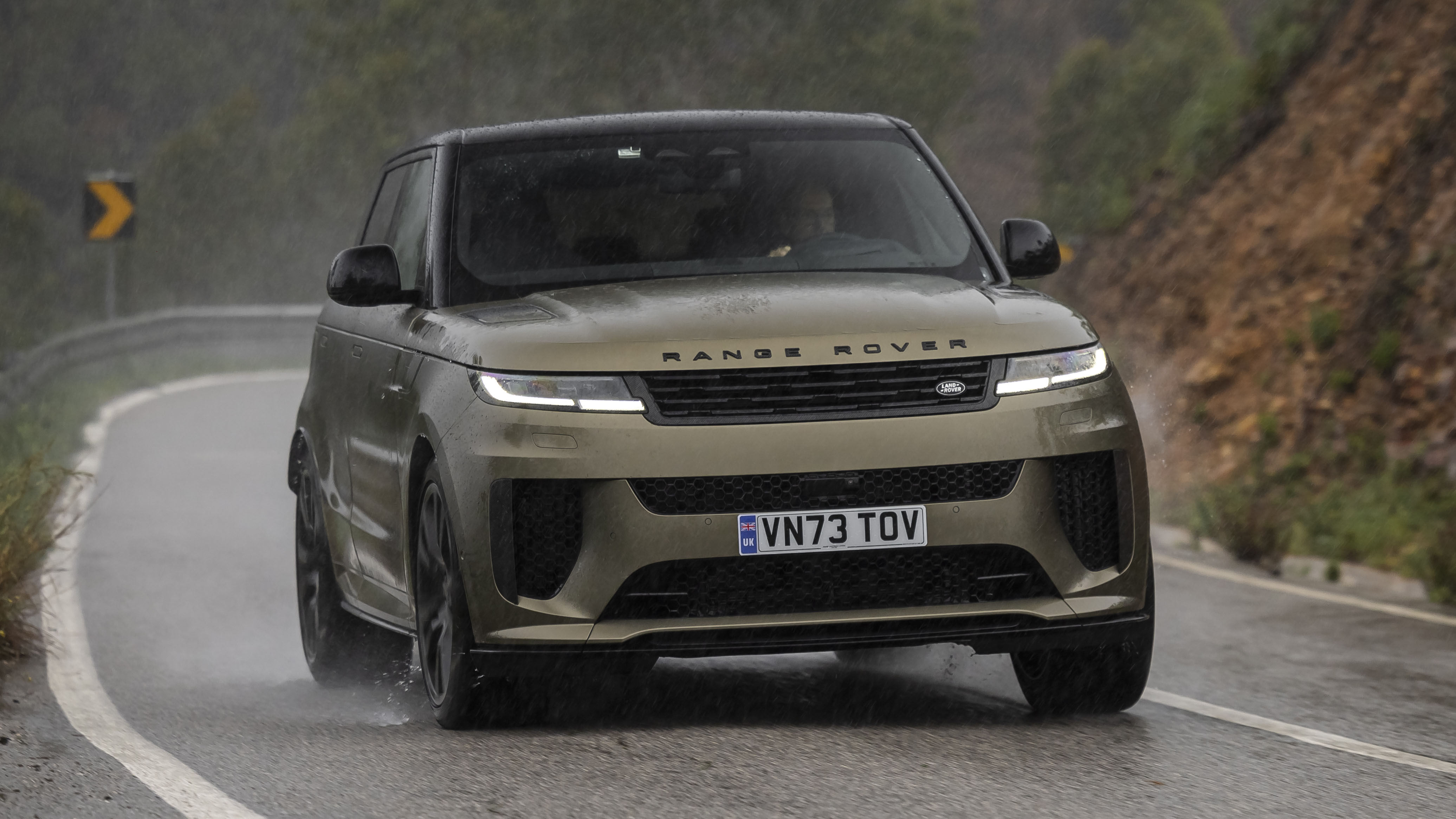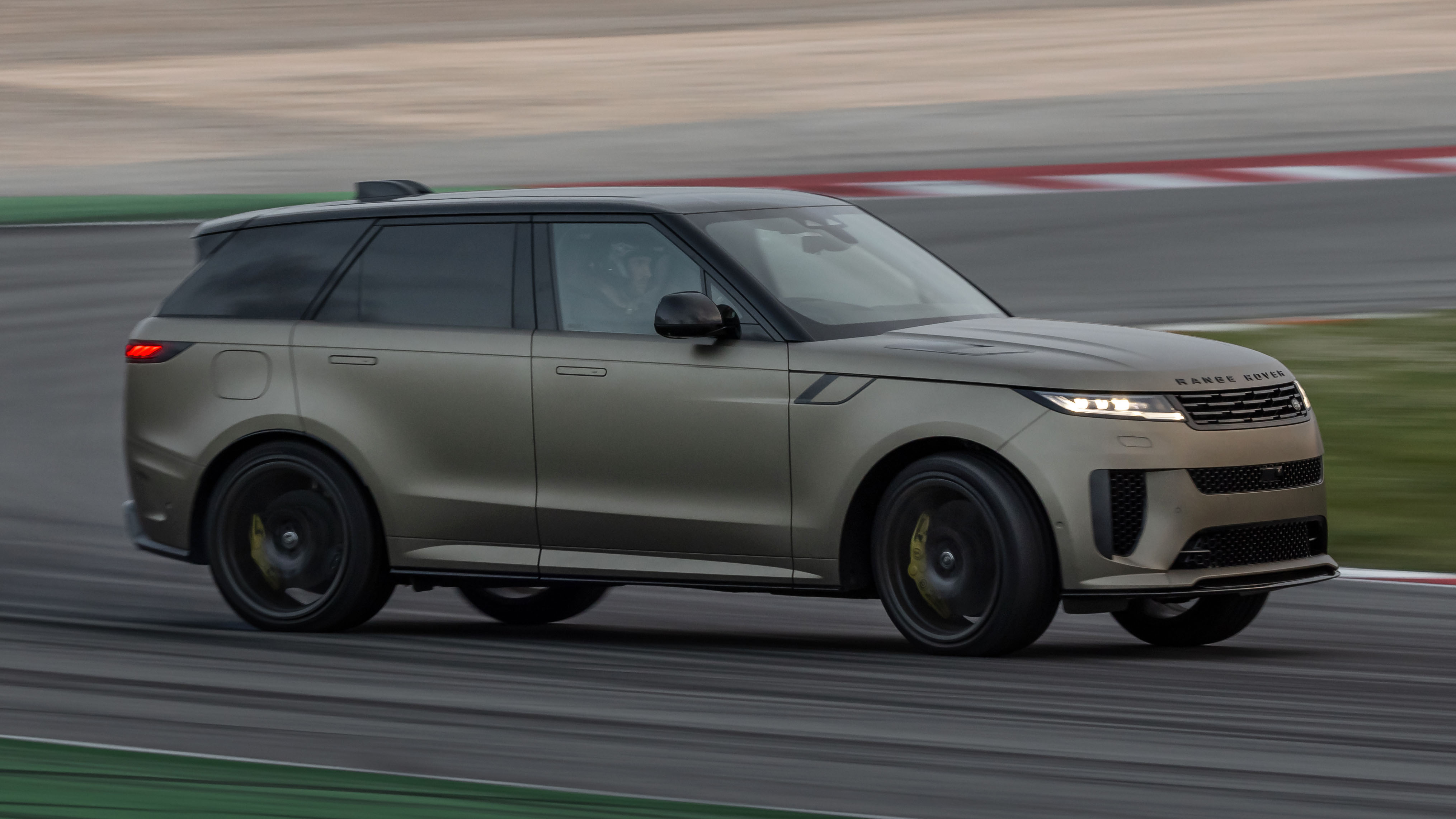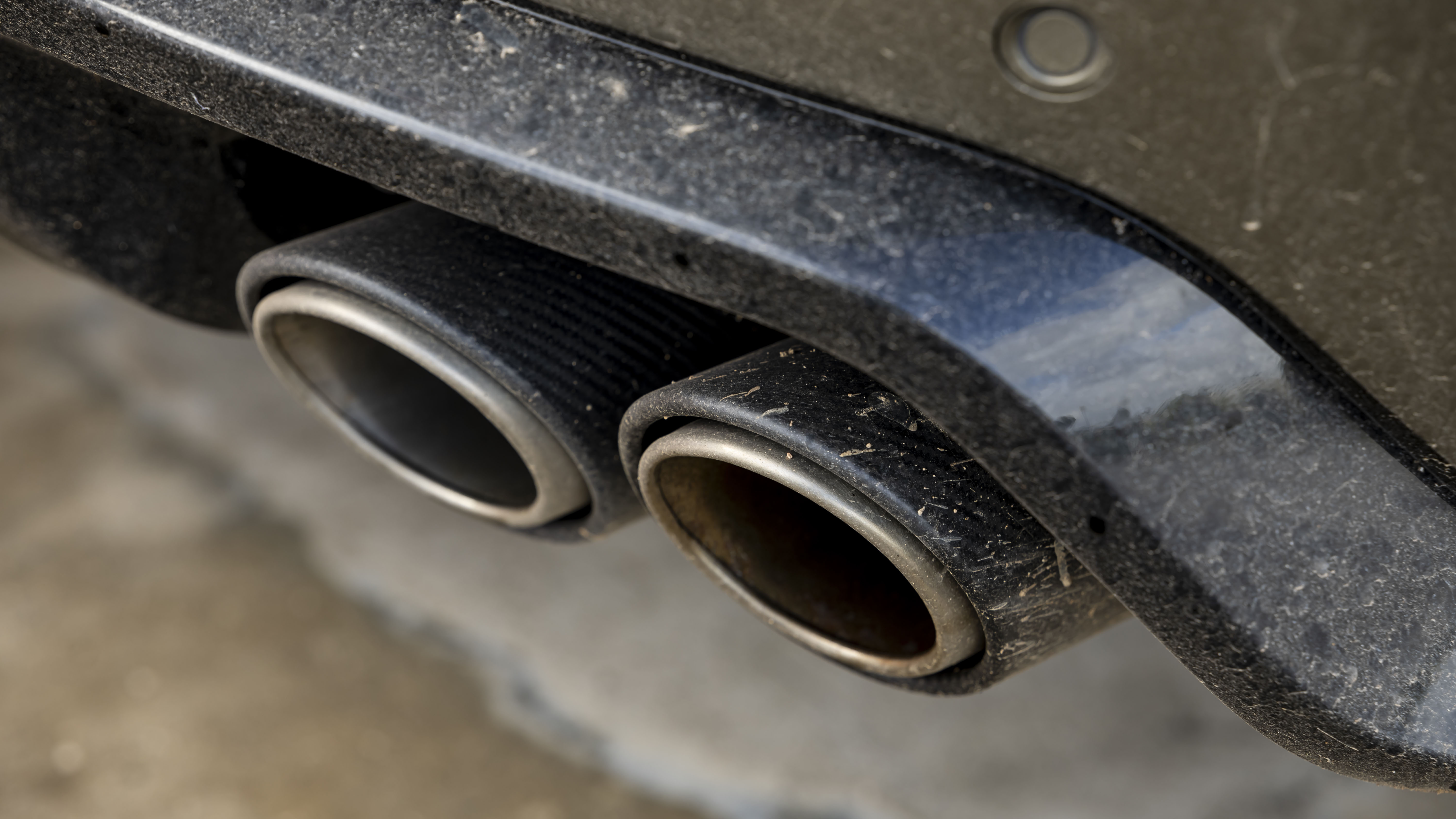
Range Rover Sport SV review: civilised looks, brutish personality
£168,500 when new
SPEC HIGHLIGHTS
- BHP
626.3bhp
- 0-62
3.9s
- Max Speed
180Mph
Range Rover Sport SV? Will the SVR be along shortly?
No, this is it. SV replaces SVR, and with the loss of a letter comes a gain in image. The old SVR was very much a car of its time. It was a brash, boisterous car for brash, boisterous people. The new one has curated wellness tracks. The signature colour is now an understated bronze, not a punchy blue. Someone’s pinched the exhaust’s lips closed. And applied technology to the handling. In short, the hottest Range Rover Sport has been civilised.
How thick’s the veneer of civility? Is it now just a luxury car?
Absolutely not. The above is just to draw the attention away from the more yobbish elements. The SV’s own and others. Performance SUVs are a hard sell in a climate conscious market with Just Stop Oil protesters threatening to slash your tyres and make your car uninsurable, so Range Rover has added a layer of sophistication to distract them and allow it to go about its business more surreptitiously. Underneath it hasn’t changed as much as Land Rover likes to pretend.
So, it’s still quick?
Of course. Although maybe not delivered in the way you expect. Because for all this talk of genteel manners and keeping a low profile, what lies under the bonnet isn’t a hybrid, doesn’t have any form of electric assistance – it’s a whacking great V8. Not the old supercharged 5.0-litre V8 as that was about as efficient as setting light to an oil well, instead Range Rover has been cap in hand to BMW and come back with the M5’s twin turbo 4.4-litre V8.
So that’s 626bhp and 590lb ft on overboost, allowing the 0-62mph time to fall by almost a second to 3.8secs. Top end is 180mph. At this point I should point out it weighs 2,560kg. Think of the momentum.
I am. What on earth’s it done to permit it to keep control of itself?
Technology has been applied. Lots of tall, heavy SUVs use active anti-roll bars to hold themselves level through corners. The SV has gone one-step beyond. It uses something called 6D Dynamics: cross-linked hydraulic dampers that pump fluid around to resist not just roll, but compression under pitch and dive as well. In other words, you chuck it around all you like, it stays level. No other fast SUV has this level of chassis tech.
Does it work?
Range Rover claims it can pull 1.1g of lateral grip. It doesn’t. I got it to do over 1.2g and hit 1.4g under braking. That’s remarkable. But I don’t like plain numbers, because they don’t give you a sense of things. So, here’s what it’s like to drive: it feels good when it’s used hard. The system can keep up, so slaloming about doesn’t catch it out, and there’s enough small natural movements in it that it doesn’t feel weird or artificial. It’s very composed and together, shrugging off most of its weight.
But the ride is odd. The system might be brilliant when pushed hard, but at ordinary road speeds, when the dampers don’t have to work so hard, they seem to lose concentration. With less pressure in the system the ride gets a bit turbulent. But it’s softly turbulent, not crashy and harsh. This might be battling the Lamborghini Urus and top end Porsche Cayennes, but it’s not as unyielding and unforgiving as them. In fact, I found myself stiffening it up into Dynamic mode on the road to give the suspension more control.
So it’s a bit of a softy?
It’s more refined and comfortable than other outer limits fast SUVs. In fact I don’t think it’s any less comfortable to do distance in than the regular Rangey Sport, so it’ll do the passengers and kit stuff just fine and the less car enthusiastic people in your household won’t curse you for buying a daft thing.
What’s this about wellness tracks?
Ah, well, indirectly this is quite cool. Range Rover has fitted the SV with a secondary massage system. It’s called BASS (Body And Soul Seat) and it consists of four ice hockey puck-like transducers fitted in the backrest of each front seat. They’re connected to the full house 29-speaker, 1,430-watt Meridian sound system and vibrate with the music, so you get to feel it as well as hear it. Yes, it’s another gimmick, but this one works.
Naturally Range Rover then commissioned Coventry University to develop some Wellness tracks to “help promote mental and physiological wellbeing”. You can choose them in the touchscreen. You’ll do it once and thereafter discover the Foo Fighters tingle the bits Wellness struggles to reach, and work more harmoniously with the V8.
Top Gear
Newsletter
Thank you for subscribing to our newsletter. Look out for your regular round-up of news, reviews and offers in your inbox.
Get all the latest news, reviews and exclusives, direct to your inbox.
What’s it like inside?
Everything has been buried in the central touchscreen, including the heating controls. Gah. Cue a cabin that looks minimalist, but operationally is anything but. There is a shortcut SV button on the steering wheel, but for everything else prepare to wage war with the touchscreen or steering wheel pads.
The driving position still has Range Rover’s typical authority, and the seat is as burly as the car itself. It doesn’t come across as especially sporty, and that’s a good thing. Nor has it had to compromise on practicality or refinement. More good stuff.
Will I get a kick out of driving it?
Range Rover insists it’s some kind of track monster, so off I went to Portimao. And it was impressive. Caveat: for a 2.5-tonne off-roader. It doesn’t have one of those 4WD systems that sends as much power as it can to the outside rear tyre to induce oversteer, which means it’s not great at skids unless it’s wet because the combo of weight and grippy Michelin Pilot Sport 5S tyres (All Seasons are standard) is enough to keep 626bhp from getting too carried away. The 4WD makes the choices about where power goes and roughly tries to send 70 per cent to the back axle. In the wet it will slide, and that looks hilarious, but it’s full-on hippo-on-an-ice-rink stuff. Reminded me of the time I span a racing truck on to wet grass. Still get the shivers from that.
Once the PTSD episode is over, tell us what the SV’s like on country roads.
It’s no quicker down a country road – or round a track – than a well sorted hot hatch and you’re not getting nearly as much feedback and engagement from it. The steering is good – much faster rack, no float around the straightahead, reasonable awareness of available grip. The brakes are terrifically powerful, easily able to rein in the thunderous engine – more about them soon. The eight-speed gearbox is pretty quick, too. It goes much harder than it has any right to.
But knowing it has an M5's heart, that’s the car I kept thinking about. That’s not only significantly faster than this, but both rides and handles better and has a remarkable 4WD system that allows you to send everything to the back axle. If you’re a discerning car enthusiast, wait for the M5 Touring. Or buy an RS6. This is for those that believe a sports SUV isn’t a contradiction in terms.
To be fair it hits something of a sweet spot because it doesn’t require compromise (except on efficiency and purchasing as we’ll come on to), yet does deliver on pace and performance. This is a quick car, it’s able to keep control of itself (which the old one never really was) and it makes a great – if more muted – noise.
What are the drawbacks?
So, here’s the complication. You can have your SV with carbon wheels and carbon brakes. I didn’t drive one without them. As I said above the 440mm brakes are immensely powerful, but in most driving the pedal is completely dead. No feel whatsoever, actually quite hard to work out how much force you need to apply. For that reason alone, I wouldn’t have them. The feel is more important to me than the ultimate stopping power or the 34kg weight saving. And you can still overheat them – hard track use had flames licking from the rear calipers.
Then there’s the 23in wheels. I wanted to take the SV off-road to find out if it’s still a proper off-roader (Range Rover insists it is and has to pass all the same tests as the rest of the range), but this one was fitted with carbon wheels. Yes, really. OK, they save another 35.6kg, but don’t do it to yourself. I put a good scratch in a wheel just turning round in a gravel layby. The kerbstones outside that softplay you take your kids too are anything but. Carbon wheels are this car’s chocolate teapot.
Don’t buy into all this nonsense about weight saving. Yes, it’s from unsprung weight and that’s important, but if Range Rover really cared about making the SV dynamic, it would have stripped half a tonne out. But that’s expensive to do and hard to sell to buyers. More power is cheap, and more carbon is very saleable.
So the carbon doesn’t come as standard?
Some of it does – the bonnet is carbon, so to the front badge – but the brakes will set you back £7,000 and the wheels another £6,900. And that’s on top of the asking price. Because Land Rover believes it can ask £171,460 for an Edition One SV. In fact, it knows it can – all 550 made available in the UK are already spoken for. And therefore, available second hand on delivery mileage right now for over £200k. In due course other, cheaper versions will come.
I don’t know what to think. I find myself drawing odd parallels with the Ferrari SF90 XX – that was another car where I was impressed by the engineering but found the rest of it an exercise in cynicism. Yes, this is a big step on from the old SVR, it’s got a broader range of capability and a less obnoxious image, but it’s still likely to appeal to the same clientele. They might leave the showroom carbon bronze, but expect vehicle wrappers to be kept busy.
What’s the opposition?
The car that probably comes closest to the SV in terms of comfort/capability is the Bentley Bentayga. The SV wants to be seen as hitting the Lambo Urus and Porsche Cayenne head on, but it’s just too heavy. But that actually means it sits in a happy place – it is (provided you can look past the sub-20mpg consumption, the literature says 24.1mpg, but don’t be fooled) a better all-rounder than them.
Let’s sum it up then.
The most dynamic Range Rover there’s ever been.
Featured

Trending this week
- Car Review
BMW 1 Series
- Top Gear's Top 9
Nine dreadful bits of 'homeware' made by carmakers




